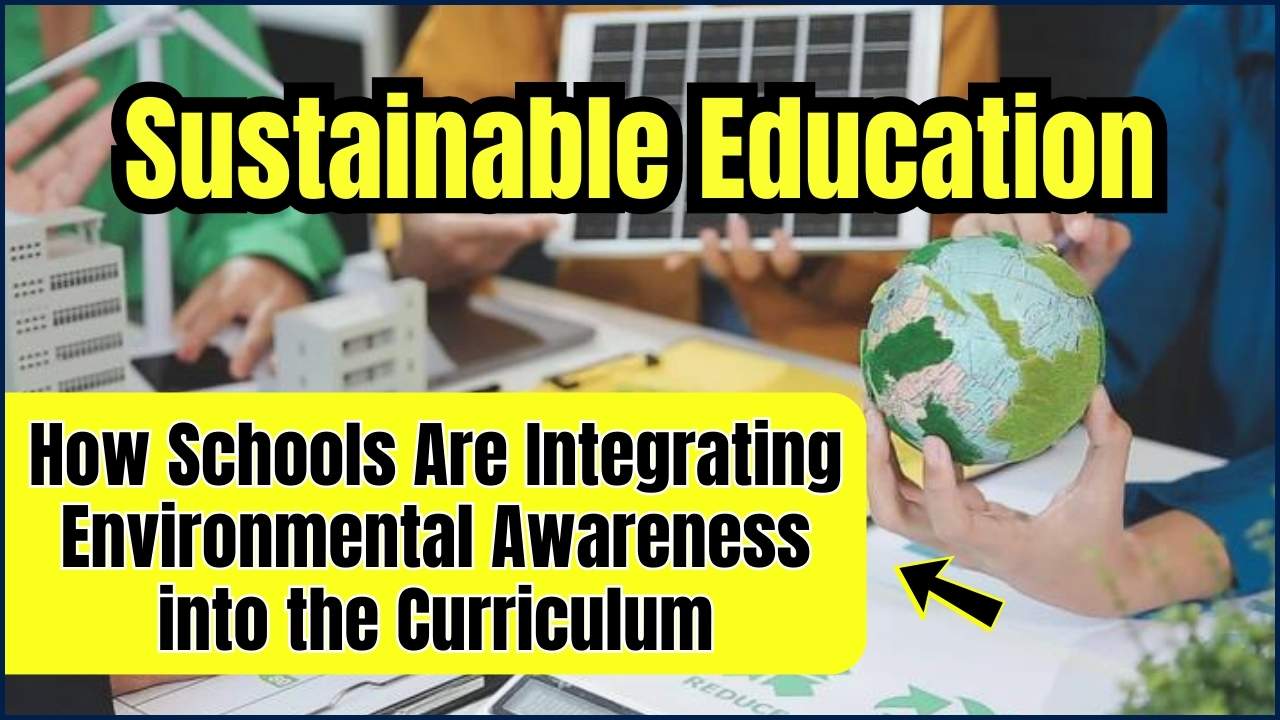Global Shift Towards Skill-Based Education: In today’s ever-evolving, fast-paced world, skill-based education has taken center stage. It’s no longer just about what you know—it’s about what you can do. Whether you’re a tech geek diving headfirst into artificial intelligence, a green-tech enthusiast designing the next-gen solar panel, or a budding entrepreneur building your own brand, employers across the globe are shouting the same message: skills over degrees. This global educational pivot is changing how universities and traditional academic systems function, raising a burning question—are universities ready to make this leap into the future?

Global Shift Towards Skill-Based Education
| Topic | Details |
|---|---|
| Trend | Global rise in skill-based education over traditional degrees |
| India’s Approach | NEP 2020 and NCrF pushing micro-credentials for job readiness |
| Challenges | Curriculum overhaul, faculty training, and outdated assessment methods |
| University Adoption | Only 22% of institutions report implementation despite 86% support |
| Notable Examples | TeamLease Skills University (India), Apprenticeship Degrees (UK), TAFE Pathways (Australia) |
| Official Link | Inside Higher Ed – Skills-Based Education |
The global shift toward skill-based education is more than a trend—it’s a revolution in how we define knowledge, success, and career readiness. As digital disruption continues to reshape industries, students need skills that let them adapt, solve problems, and create value.
Universities that embrace this movement have a real shot at shaping the future. But they must act now—rethinking curriculum, supporting faculty, building partnerships, and above all, listening to what learners and employers actually need.
The finish line is clear. This isn’t a question of if we shift to skill-based education—it’s a matter of how soon we make it universal.
Why Skills Are the New Degree
Let’s not sugarcoat it—today’s employers aren’t handing out job offers just because you’ve got a diploma hanging on your wall. They want to see if you can actually solve problems, write code, design products, manage teams, or analyze data. Simply put, they want doers, not just degree holders.
Take the AI industry for example. A comprehensive study of job postings in the UK from 2018 to 2024 found that explicit university degree requirements dropped by 15%. Meanwhile, the demand for actual, hands-on AI skills surged by 21% . That stat alone tells a compelling story about where hiring is headed.
In the United States, tech giants like Google, IBM, and Apple are now on the record saying that college degrees aren’t a necessity anymore—as long as candidates bring the right certifications, portfolio, and demonstrable experience to the table.
How Countries Are Responding: India and Beyond
India isn’t just participating in this revolution—it’s leading the charge with bold moves. The National Education Policy (NEP) 2020 and the National Credit Framework (NCrF) are game changers. They’re all about flexibility, mobility, and skill recognition. According to a Coursera survey, 95% of Indian higher education leaders believe that micro-credentials dramatically improve a student’s employability.
More than half of Indian universities now allow students to earn credits through online short-term courses, coding bootcamps, or even YouTube-certified content—provided it’s from a recognized provider. Students can build their own learning paths, blending traditional academics with high-demand digital skills.
Outside of India, countries like Singapore, Germany, and Finland are also embracing modular learning. The Finnish model, for instance, allows students to pick skill-based modules throughout their academic journey and blend them with soft skills like communication and leadership.
Are Universities Really Ready?
Despite all the buzz, there’s a huge readiness gap. A deep-dive study by the Council for Adult and Experiential Learning (CAEL) revealed that while 86% of faculty and administrators acknowledge the importance of skills-first learning, only 22% of institutions have a formal system in place to deliver it. That’s like knowing there’s a storm coming and refusing to fix the roof.
Still, there are some trailblazers. TeamLease Skills University in Gujarat, India, for example, integrates theory with internships and apprenticeships. In the UK, apprenticeship degrees allow students to learn in classrooms and in companies at the same time. In the U.S., Northeastern University offers co-op programs that place students directly into jobs during their education.
The Big Hurdles: Why Change Is Tough
Even when the intention is there, change doesn’t happen overnight. Universities are facing some serious hurdles:
Curriculum Overhaul
Many syllabi were designed decades ago and haven’t kept pace with tech trends or labor market shifts. Updating these isn’t a matter of editing a PowerPoint. It demands coordination, academic freedom, and serious investments.
Faculty Training
Knowing something doesn’t mean you can teach it effectively in a skill-based format. Educators themselves need re-skilling to better mentor students through hands-on activities, simulations, and project-based assessments.
Assessment Woes
Grades and exams don’t measure creativity or leadership. Schools need rubrics, capstone projects, and portfolio reviews to track what really matters in the workplace.
Resistance to Disruption
Universities have been around for centuries. Many are hesitant to disrupt the “degree = success” model, fearing reputational loss or drops in enrollment if they pivot too quickly.
Who’s Getting It Right?
Thankfully, not everyone is dragging their feet. Let’s spotlight a few heroes:
In New South Wales, Australia, the government rolled out a strategy uniting TAFE (vocational training) and universities. It enables credit transfers and recognizes on-the-job experience as valid academic input.
McDonald’s Australia, through its Archways to Opportunity program, lets employees earn stackable micro-credentials that count toward business degrees. In Germany, the dual education system pairs vocational school with apprenticeship training, allowing students to earn while they learn.
Google Career Certificates have also made a splash. Available through platforms like Coursera, they let learners earn credentials in areas like data analytics and UX design—often in under six months. Better yet, these certificates are now accepted by over 150 U.S. employers.
What Should Students and Parents Do?
For students, here’s the new playbook:
- Ask universities what skills you’ll graduate with—not just the courses you’ll take.
- Look for programs that offer micro-credentials, project-based learning, or real-world internships.
- Consider hybrid paths: bootcamps + university, online certifications + community college.
Parents, encourage your kids to choose learning paths that prepare them to be adaptive, entrepreneurial, and digitally fluent. The world is changing too fast to rely on one-size-fits-all degrees.
Advice for Educators and Institutions
The writing’s on the wall. Universities that fail to innovate risk irrelevance. Here’s what they can do:
- Audit your curriculum annually to ensure alignment with industry demands.
- Train professors in modern teaching methods and skill assessments.
- Form public-private partnerships with local employers for live projects.
- Offer blended degrees with stackable certifications, internships, and interdisciplinary electives.
Education needs to move from static classrooms to dynamic ecosystems where students build skills while earning their credentials.
FAQs About Global Shift Towards Skill-Based Education
Q1: What is skill-based education?
A method of learning that prioritizes the development of real-world skills over memorizing facts.
Q2: Is it better than traditional education?
It depends. Skill-based learning is often more aligned with job-readiness, while traditional education may offer deeper academic understanding.
Q3: Can I get a job without a college degree?
Yes. Companies like IBM, Tesla, and Google hire based on skills and certifications, not just diplomas.
Q4: How do I know if a course offers skill-based learning?
Look for keywords like “hands-on projects,” “practical training,” “portfolio-based assessment,” or “industry alignment” in course descriptions.
Q5: Where can I find skill-based programs?
Online platforms like Udacity, Coursera, edX, and even universities offering hybrid or vocational programs.











